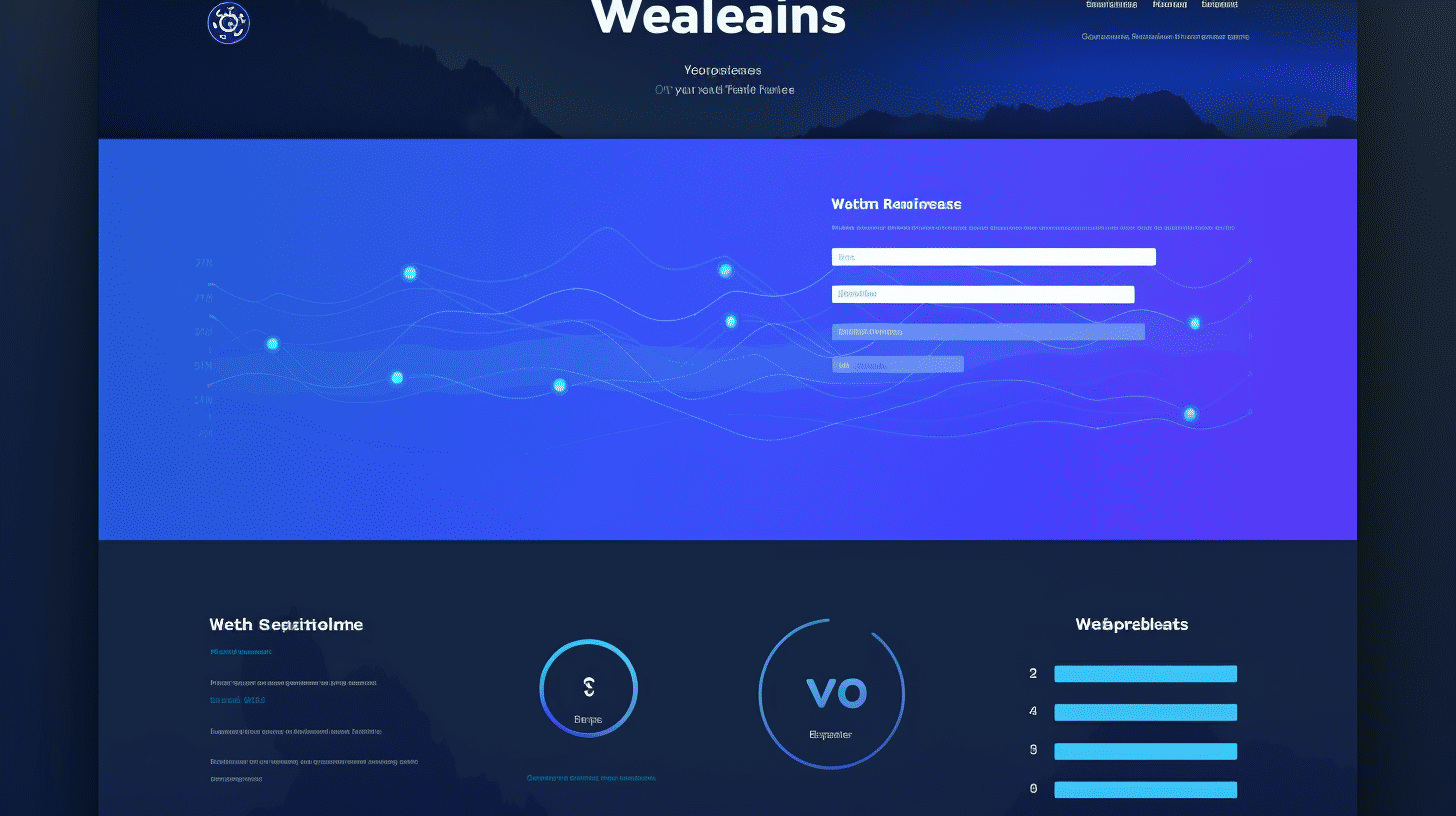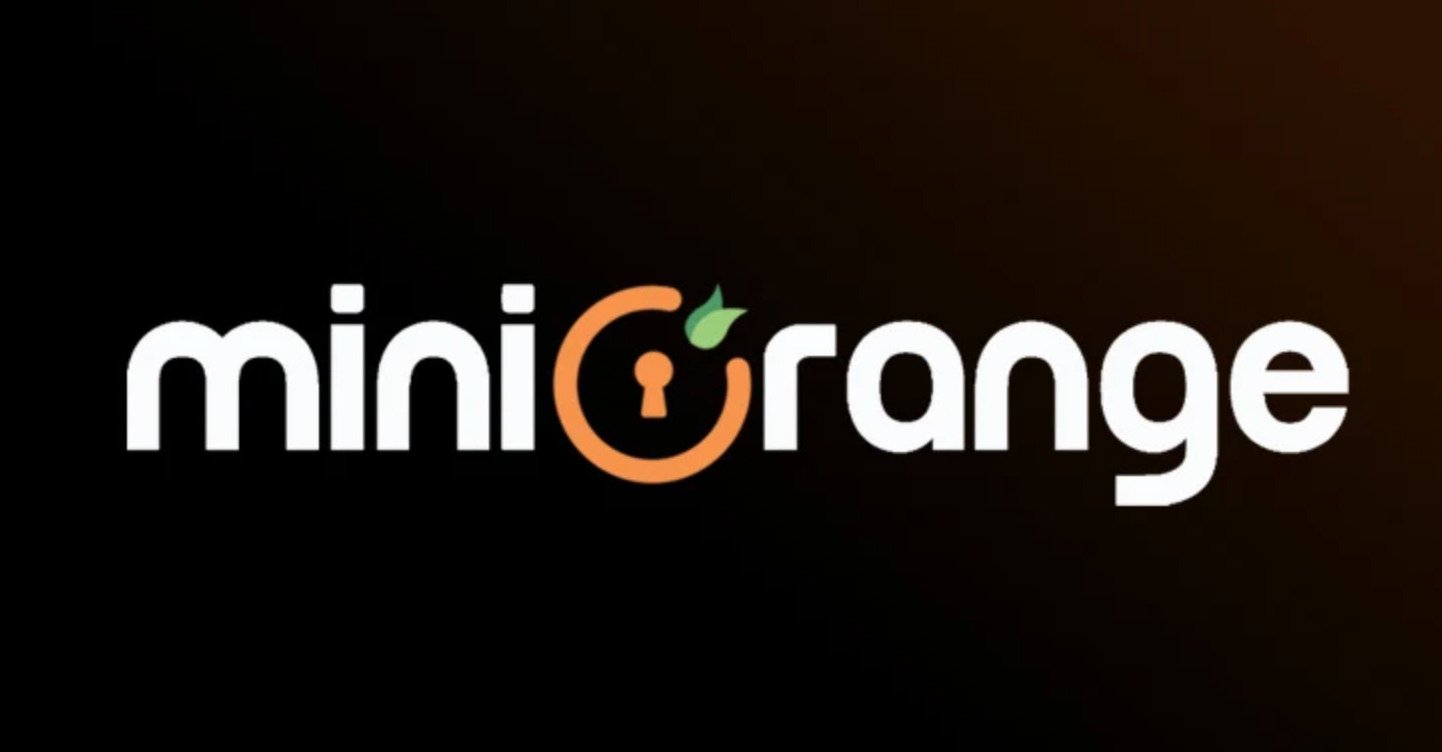網站是數位時代的店面,在這個快節奏的世界中,速度和效能對於成功至關重要。網站載入緩慢不僅會讓訪客感到沮喪,還會影響搜尋引擎排名。因此,網站所有者不斷尋找加速其網站效能的方法。
一個越來越受歡迎的創新解決方案是「Headless WordPress」。這種方法將 WordPress 網站的前端和後端分開,讓網站所有者能夠利用 WordPress 的強大功能,同時利用現代前端技術。透過 Headless WordPress,開發人員可以靈活地建立速度極快的網站並提供無縫的使用者體驗。
在本文中,我們將探討 Headless WordPress 的概念、它對網站效能的好處、實際用例、潛在挑戰以及克服它們的解決方案。最後,您將清楚了解 Headless WordPress 如何提升您網站的效能並將其提升到一個新的水平。讓我們開始吧! 🚀
了解無頭 WordPress
🔍 Headless WordPress 的定義
在 Web 開發領域,Headless WordPress 是近年來越來越受關注的概念。但它到底意味著什麼?簡單來說,Headless WordPress 是一種將 WordPress 網站前端和後端分開的方法。
傳統上,WordPress 被用作全端內容管理系統 (CMS),其中後端和前端緊密整合。使用 Headless WordPress,負責使用者介面和使用者體驗的前端與處理內容管理和資料庫的後端分開。
✨ 功能和用法
那麼,為什麼有人會選擇使用 WordPress 呢?那麼,使用這種方法有幾個優點:
- 靈活性:透過解耦前端和後端,開發人員可以自由選擇最適合其需求的技術。他們可以使用 React 或 Angular 等現代框架來建立前端,同時仍利用 WordPress 強大的內容管理功能。
- 提高性能:由於前端不與後端綁定,因此可以進行效能最佳化。這意味著更快的頁面載入時間和更流暢的使用者體驗。
- 可擴展性:Headless WordPress 具有可擴展性,因為後端可以處理大量內容和數據,而前端可以使用無伺服器技術或 CDN(內容分發網路)輕鬆擴展。
- 全通路內容交付:Headless WordPress 的另一個好處是能夠無縫地將內容傳遞到多個管道,例如網站、行動應用程式甚至物聯網裝置。內容透過 API(應用程式介面)傳遞,從而更容易接觸到更廣泛的受眾。
🤔 與傳統 WordPress 的比較
雖然 Headless WordPress 有許多優點,但需要注意的是,它可能不是每個專案的正確解決方案。傳統的WordPress,整合了前後端,仍然有自己的優勢。兩者的比較如下:
| 無頭 WordPress | 傳統 WordPress |
|---|---|
| 解耦架構 | 緊密整合的前端與後端 |
| 靈活選擇前端技術 | 僅限於使用 WordPress 主題和模板 |
| 提高效能和可擴展性 | 大量客製化可能會遇到效能限制 |
| 全通路內容交付 | 主要關注網站 |
| 需要更多技術專業知識 | 適合初學者且使用者友善的介面 |
雖然採用無頭版本還是堅持使用傳統 WordPress 取決於專案的具體需求,但很明顯,無頭版本 WordPress 為開發人員和內容創作者開闢了新的可能性。前端和後端的分離可以實現靈活性、效能優化和多通路內容交付,為企業提供創造動態和引人入勝的數位體驗的工具。
Headless WordPress 對網站效能的好處
在當今的數位世界中,網站效能對於企業獲得競爭優勢和提供最佳使用者體驗至關重要。 Headless WordPress 是一種廣受歡迎且已被證明可以提高網站效能的創新解決方案。透過將後端 CMS(內容管理系統)與前端表示層分離,Headless WordPress 提供了多種優勢,可以顯著提高網站的速度、安全性和整體使用者體驗。
提高速度和效率⚡️
採用 Headless WordPress 最顯著的優點之一是它能夠提高網站速度和效率。傳統的 WordPress 網站由於採用單片結構,後端和前端緊密耦合,經常存在效能問題。然而,採用無頭方法,後端 CMS 與前端分離,從而可以更簡化、更有效率地傳遞內容。
重點強調:
- 透過消除處理前端渲染的負擔,Headless WordPress 讓 CMS 能夠專注於內容管理和資料儲存。
- 這種關注點分離可以縮短載入時間並減少整體伺服器回應時間,從而改善使用者體驗。
- Headless WordPress 利用 API(應用程式介面)來傳遞內容,讓開發人員能夠建立可輕鬆擴展的輕量、高效能前端應用程式。
增強安全性🔒
考慮 Headless WordPress 的另一個令人信服的原因是其增強的安全措施。傳統的 WordPress 網站由於其一體化的特性,容易受到安全漏洞的影響,前端的一個安全漏洞就可能危及整個 CMS。然而,透過無頭模式,攻擊面減少了,從而降低了安全漏洞的風險。
重點強調:
- 由於無頭架構中前端和後端完全分離,因此前端應用程式中的任何安全漏洞都不會直接影響 CMS。
- 這種解耦增加了一層額外的安全性,使得駭客更難利用任何漏洞。
- 此外,使用 Headless WordPress,可以有效地將安全更新分別應用於前端和後端,確保網站免受新出現的威脅。
改善使用者體驗😊
任何網站的最終目標都是提供卓越的使用者體驗。 Headless WordPress 透過提供更大的靈活性、客製化和可擴展性在提升使用者體驗方面發揮著至關重要的作用。
重點強調:
- 透過解耦的前端,開發人員可以自由選擇自己喜歡的技術和框架,從而實現高度可自訂和沈浸式的使用者介面。
- Headless WordPress 提供的靈活性可無縫整合第三方工具和 API,從而為訪客創建互動式功能和個人化體驗。
- 此外,由於後端 CMS 可以有效地處理內容管理,內容創作者擁有一個用戶友好的介面,可以簡化他們的任務,使他們能夠專注於為觀眾創建引人入勝的高品質內容。
總之,採用 Headless WordPress 架構會對網站的效能產生深遠的影響。透過提高速度、增強安全性和提升用戶體驗,企業可以創造競爭優勢並為受眾提供卓越的數位體驗。因此,如果您希望優化網站的效能,那麼值得考慮使用 WordPress 無頭模式的好處。
實現 Headless WordPress
作為一種現代網站開發方法,Headless WordPress 正變得越來越流行。透過分離 WordPress 網站的前端和後端,開發人員可以更靈活地創建動態和互動的使用者體驗。無論您是想要建立新網站的開發人員,還是考慮切換到無頭設定的企業主,都有一些關鍵事項需要牢記。
使用 Headless WordPress 的先決條件
在進入無頭 WordPress 的世界之前,重要的是確保您已滿足必要的先決條件。以下是一些需要考慮的事項:
- WordPress安裝:首先,您需要安裝並執行 WordPress。這將作為您的無頭設定的後端。
- API 外掛:為了透過 API 公開您的 WordPress 內容,您需要安裝並設定合適的 REST API 外掛程式。流行的選項包括 WP REST API 或較新的 Gutenberg 外掛程式。
- 前端框架:要建立無頭網站的前端,您需要選擇合適的前端框架,例如 React、Angular 或 Vue.js。熟悉所選的框架以確保開發過程順利。
無頭式部署逐步指南
準備好進入無頭 WordPress 的世界了嗎?請依照以下步驟開始:
- 安裝並配置 WordPress API 插件:首先安裝並啟動您選擇的 WordPress API 外掛。安裝後,配置插件設定以啟用 API 存取並根據需要自訂端點。
- 建立自訂主題:接下來,為您的無頭 WordPress 網站建立自訂主題。這個主題將作為後端(WordPress)和前端(您選擇的框架)之間的橋樑。
- 建構前端:自訂主題完成後,就可以開始進行前端開發了。使用您選擇的框架來建立範本和元件,從 WordPress API 取得並顯示資料。
- 測試和優化:在建立無頭 WordPress 網站時,請務必徹底測試功能並優化效能。確保所有 API 請求都傳回預期資料且您的網站正在有效率地載入。
切換到 Headless WordPress 時的注意事項
雖然無頭 WordPress 設定的想法可能令人興奮,但仍需要牢記一些重要注意事項:
- 開發複雜性:使用無頭設定可能比傳統的 WordPress 開發更為複雜。確保您擁有處理前端開發和 API 整合所需的技能和資源。
- 內容管理:使用無頭 WordPress 設置,您需要找到一種方法來在傳統 WordPress 後端之外管理您的內容。考慮使用無頭 CMS 或允許創建和編輯內容的自訂解決方案。
- 插件相容性:並非所有 WordPress 外掛都能在無頭設定中無縫運作。在進行切換之前,請徹底研究並測試基本插件的兼容性,以確保它們仍能如預期運作。
將無頭 WordPress 納入您的開發工作流程可以帶來一系列好處,從提高靈活性到提高效能。透過遵循先決條件、逐步指南並考慮重要因素,您將順利實現成功的無頭 WordPress 網站。 🚀
Headless WordPress 的實際用途
近年來,Headless WordPress 因其靈活性和多功能性而廣受歡迎。這種創新的 Web 開發方法允許開發人員將前端呈現與後端內容管理系統分離,為客製化和整合提供無限的可能性。在本文中,我們將探討 Headless WordPress 的三種實際用途以及它如何使您的網站受益。
客製化網站設計和功能
使用 Headless WordPress 的主要優點之一是能夠完全控制網站的設計和功能。透過分離前端和後端,開發人員可以利用 React、Vue.js 或 Angular 等現代前端框架的強大功能來創建令人驚嘆且高度互動的介面。
您可以使用以下一些方法使用 Headless WordPress 自訂網站設計和功能:
- 靈活的主題: 使用 Headless WordPress,您可以使用您喜歡的前端框架來建立自訂主題。這使您可以建立一個獨特且具有視覺吸引力的網站,與您的品牌形象完美契合。
- 增強性能: 透過分離前端和後端,您可以優化網站的速度和效能。您可以完全控制資產的交付方式,從而實現延遲載入、影像優化和快取等技術,以改善整體使用者體驗。
- 動態內容: Headless WordPress 讓您能夠動態地獲取和顯示內容,從而為您的用戶創建豐富的互動和個人化的體驗。您可以輕鬆地與 API 或第三方服務整合以獲取即時數據,例如天氣更新、社交媒體資訊或產品資訊。
建立漸進式 Web 應用
漸進式 Web 應用程式 (PWA) 是行動 Web 開發的未來,它兼具兩全其美的特點:網站的可訪問性和原生應用程式的功能。透過 Headless WordPress,您可以利用 JavaScript 框架的強大功能和解耦 CMS 的靈活性輕鬆創建 PWAs。
這就是為什麼 Headless WordPress 是建立 PWAs 的理想選擇:
- 無縫離線存取: 使用 Headless WordPress 建立的 PWAs 可以快取內容和資產,讓使用者即使沒有網路連線也可以存取您的應用程式。無論網路可用性為何,這都能確保一致、不間斷的使用者體驗。
- 推播通知: 透過推播通知提高用戶參與度和保留率。使用 Headless WordPress,您可以向用戶發送有針對性的個人化通知,讓他們了解並參與您的應用程式。
- 快速響應: 使用 Headless WordPress 建立的 PWAs 效能出色,可提供流暢且反應迅速的使用者體驗。透過延遲載入和其他效能優化技術,您可以確保您的應用程式即使在較慢的網路連線下也能快速載入。
與其他服務集成
Headless WordPress 允許與其他服務和 API 無縫集成,使您能夠擴展網站或應用程式的功能。無論您需要連結電子商務平台、社群媒體網路或分析工具,Headless WordPress 都能滿足您的需求。
以下是將 Headless WordPress 與其他服務整合的一些範例:
- 電子商務整合: 透過將 Headless WordPress 與 Shopify 或 WooCommerce 等流行的電子商務平台集成,您可以創建強大且可擴展的線上商店。同步庫存、管理訂單並無縫展示產品。
- 社群媒體聚合: 使用 Headless WordPress,您可以提取社交媒體資訊並將其聚合在您的網站上。這使您可以顯示來自 Twitter、Instagram 或 Facebook 等平台的即時更新,讓您的用戶參與並了解最新情況。
- 分析與追蹤: 將 Headless WordPress 與 Google Analytics 或 Mixpanel 等分析工具集成,以追蹤用戶行為並收集有價值的見解。這些數據可以幫助您優化您的網站並做出數據驅動的決策以提高效能。
總之,Headless WordPress 為客製化、靈活性和整合提供了無限的可能性。無論您是想創建一個視覺上令人驚嘆的網站、建立漸進式 Web 應用程式還是與其他服務無縫集成,Headless WordPress 都是一個強大的工具,可以將您的 Web 開發提升到一個新的水平。
潛在挑戰和解決方案
與任何努力一樣,在建立和維護一個成功的網站時可能會出現潛在的挑戰。本節將探討其中的一些挑戰並提供解決方案來幫助克服這些挑戰。
設定和維護困難
啟動網站可能是一項艱鉅的任務,特別是如果您不熟悉網站開發的技術方面。以下是您在設定和維護網站期間可能遇到的一些常見問題以及一些可能的解決方案:
- 設計與佈局: 為您的網站創建美觀且用戶友好的設計可能具有挑戰性。考慮使用預先設計的範本或聘請專業的網頁設計師來幫助您創建吸引人的佈局。
- 技術知識: 缺乏技術專業知識會使處理諸如安裝和配置插件、優化網站速度或解決編碼問題等任務變得困難。透過參加線上課程或教學課程來學習,或考慮聘請開發人員或技術顧問來協助您。
- 託管和伺服器問題: 處理與託管和伺服器相關的問題(例如載入時間緩慢或停機)可能會令人沮喪。為了緩解這些挑戰,請仔細選擇可靠的託管服務供應商,並考慮隨著網站的發展升級伺服器資源。
可能的 SEO 問題
搜尋引擎優化 (SEO) 對於吸引自然流量到您的網站至關重要。然而,在針對搜尋引擎優化您的網站時,您可能會面臨潛在的挑戰。以下是一些常見的SEO問題及其解決方案:
- 關鍵字研究: 找到與您的內容相符且搜尋量較高的正確關鍵字可能很棘手。使用 Google Keyword Planner 或 SEMrush 等關鍵字研究工具來確定與您的行業相關的關鍵字。
- 頁面優化: 針對 SEO 優化網站的元標籤、標題和內容可能會很耗時。使用 Yoast SEO 或 Rank Math 等 SEO 外掛程式來簡化流程並確保適當的優化。
- 連結建設: 獲取高品質的反向連結來提升您網站的權威性可能是一個挑戰。專注於創建有價值且可共享的內容,自然地吸引您所在領域內知名網站的連結。
管理內容交付
向您的受眾提供高品質且引人入勝的內容對於您網站的成功至關重要。然而,在有效地管理和傳遞內容時,您可能會遇到一些挑戰。以下是一些潛在問題和解決方案:
- 內容規劃: 定期提出新鮮且相關的內容創意可能具有挑戰性。使用 Trello 或 CoSchedule 等內容規劃工具來組織您的內容日曆並集思廣益。
- 內容創作: 持續製作高品質的內容可能非常耗時。考慮將寫作或圖形設計等某些任務外包給自由工作者或內容機構以減輕工作量。
- 內容分發: 將您的內容呈現給合適的受眾可能會很困難。利用社群媒體平台、電子郵件行銷和 SEO 策略來有效地推廣和分發您的內容。
透過認識和解決這些潛在挑戰,您可以為成功做好準備,並確保您的網站在不斷發展的數位環境中蓬勃發展。請記住,毅力和適應力是克服障礙、實現目標的關鍵。現在,讓我們進入下一部分,深入探討網站優化的世界。
結論
總之,採用無頭 WordPress 可以顯著加速網站效能,提高速度、安全性和使用者體驗。透過分離 WordPress 網站的前端和後端,您可以獲得一系列好處並探索客製化和整合的新可能性。
實施無頭 WordPress 需要仔細考慮和規劃,確保您滿足先決條件並遵循逐步指南以成功實現無頭。儘管在此過程中可能會遇到挑戰,例如建立和維護基礎設施或解決潛在的 SEO 問題,但仍有解決方案可以克服這些障礙。
最終,無頭 WordPress 為希望優化網站效能和創造創新數位體驗的企業和開發人員提供了強大的解決方案。憑藉其提供的靈活性和自由度,您可以真正釋放 WordPress 網站的全部潛力。
為了簡化向無頭 WordPress 設定的過渡並確保無縫體驗,請考慮利用託管的 WordPress 雲端託管平台(如 Managed-WP™)。 Managed-WP™ 憑藉其在基礎設施管理方面的專業知識和全天候支持,可提供必要的工具和指導,幫助您成功駕馭無頭 WordPress 世界。
探索無頭 WordPress 的可能性並體驗其提供的無與倫比的性能。詳細了解 Managed-WP™ 以及它們如何支持您的旅程,請訪問 管理-wp.com.
常見問題解答
- 什麼是無頭 WordPress?
Headless WordPress 是一種架構,其中使用 WordPress 的後端和內容管理功能,而前端則使用單獨的技術構建,通常是 React 或 Angular 等 JavaScript 框架。
- 為什麼我要考慮使用 Headless WordPress?
使用 Headless WordPress 可以顯著提高網站效能,因為它可以將前端與後端分離,從而實現更快的頁面載入時間、更好的可擴展性和增強的使用者體驗。
- 使用 Headless WordPress 會影響 SEO 嗎?
使用 Headless WordPress 不會對 SEO 產生負面影響。透過適當的實施,您可以保留 WordPress 的所有 SEO 優勢,例如優化內容、結構化資料和元標記,同時享受無頭架構的效能優勢。
- 實施 Headless WordPress 面臨哪些挑戰?
實施 Headless WordPress 的一些挑戰包括學習曲線更陡峭、開發複雜性增加、單獨的前端和後端系統的額外維護和管理以及與某些外掛程式的潛在相容性問題。
- 我還可以在 Headless WordPress 中使用 WordPress 外掛嗎?
雖然 Headless WordPress 網站的前端是採用單獨的技術構建的,但您仍然可以利用龐大的 WordPress 外掛程式庫來管理後端功能,例如 SEO、安全性、快取和內容管理。



















